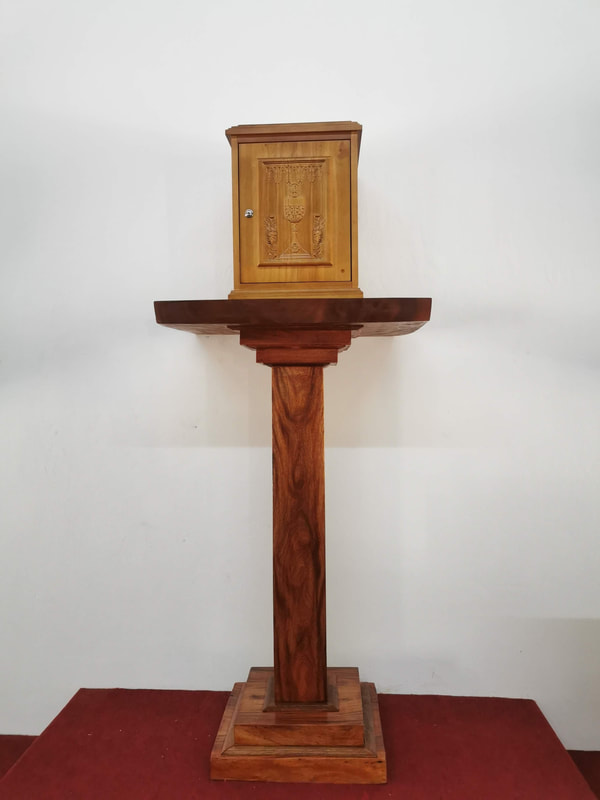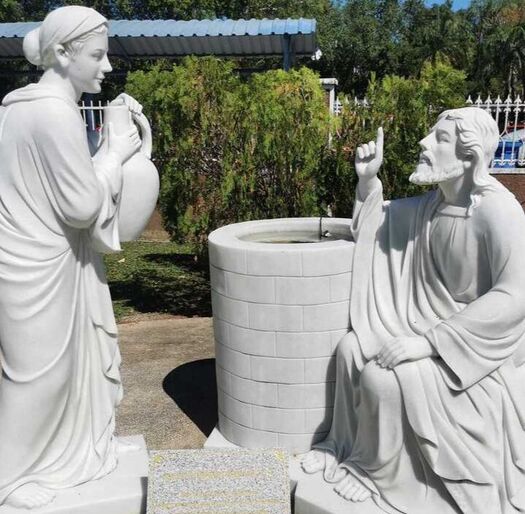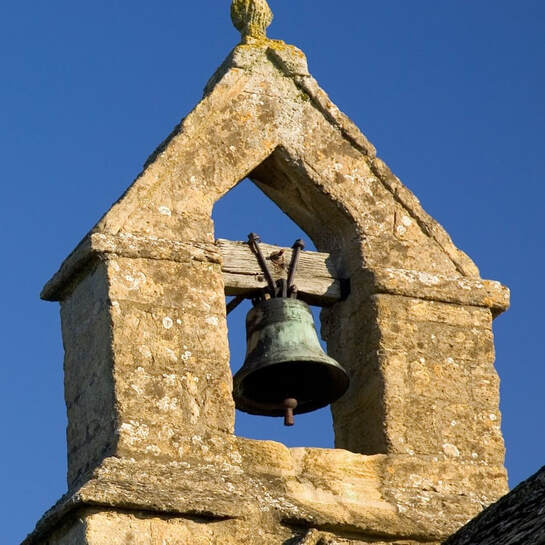

The Sanctuary Lamp
As you enter the Church at the right-hand corner of the sanctuary, you will notice a lighted lamp hanging from the ceiling. This lamp is known either as “Sanctuary Lamp “or “altar lamp”. It is usually hung or placed near the Tabernacle, a symbol of Christ’s presence.
Origin of the Sanctuary Lamp
The origin of the use of the lamp goes as far back as in the time of Moses. In the Old Testament, God told Moses that a lamp filled with pure oil should perpetually burn in the Tabernacle. (Ex 27:20-21) The Tabernacle is where the Eucharistic Body of Christ is reserved under lock and key.
In the General Instruction of the Roman Missal No.316 (GIRM 316), it is also stated; “In accordance with traditional custom, near the tabernacle a special lamp, fuelled by oil or wax, should be kept alight to indicate and honor the presence of Christ.”
Canon 940 – A special lamp is to burn continuously before the tabernacle in which the blessed Eucharist is reserved, to indicate and to honor the presence of Christ.
Color of the Lamp
Although sanctuary lamps have been red in many traditions, church documents do not specify a color. However, the generally accepted color is Red to distinguish it from any other votive lamp.
How long must the lamp be kept alight?
According to Saint Alphonsus Liguori, it would be a grave sin to leave the altar of the Blessed Sacrament without this candle or lamp burning for any prolonged length of time, such as a day or several nights. (St. Alph. Lig., VI, 248)
The sanctuary lamp is extinguished on Good Friday when the body of Christ is removed from the main church and relit at Easter.
The light from our sanctuary lamp was taken from the flame of the Easter candle. From this same fire, all the other candles shall be lighted and this is to remain the common practice of our Church. Jesus the source of our Light, the eternal flame.

Visit to the Blessed Sacrament
In the Catholic Church, visits to the Blessed Sacrament have become a standard part of personal and communal prayer. The first Code of Canon Law urged the “faithful to visit the Most Blessed Sacrament as often as possible”. (Canon 1273) The new Code is more specific. Unless there is a grave reason to the contrary, a church, in which the Blessed Eucharist is reserved, is to be open to the faithful for at least some hours every day, so that they can pray before the Blessed Sacrament. (Canon 937)
St John Vianney, the Cure of Ars (1787-1859) told his people, “Our Lord is hidden there in the Tabernacle, waiting for us to come and visit Him, and make our requests to Him. In heaven, where we shall be glorious and triumphant, we shall see Him in all His glory. If He had presented Himself, before us in that glory now, we should not have dared to approach Him; but He hides Himself like a person in prison, who might say to us, “You do not see Me, but that is no matter, ask of Me all you wish and I will grant it.”
Our reverence for the Blessed Sacrament
When entering and upon leaving the church, we face the Tabernacle where Jesus is reposed and we genuflect. (Those prohibited by poor health may bow to the Tabernacle as a mark of reverence.) We also genuflect when passing in front of the Tabernacle or Altar when the Body and Blood of Christ is present. Kneeling is an apt sign of reverence for the Blessed Sacrament.
We maintain a respectful decorum before the Holy Eucharist. Before, during and after Mass, we avoid useless talking in the presence of the Tabernacle so as to worship and focus our attention on the Risen Lord Jesus. Christ is summoning each of us to reflect quietly before His Body and Blood.
Unnecessary chattering in the hallowed presence of the Holy Eucharist spoils the golden opportunity to learn much at the Master’s Feet. Silence helps us to bask in the Blessed Sacrament’s indescribable glory.

The connection between the Eucharist and the Sacred Heart of Jesus
The Feast of Corpus Christi, which is our Parish Feast Day, historically had a longer celebration leading to the Feast of the Sacred Heart. The two are intimately linked, as an article in Catholic Exchange points out.
The two devotions—to the Sacred Heart and to the Eucharist—are closely connected. They call upon one another and, we may even say, they require each other. The Sacred Heart explains the mystery of the love of Jesus by which He becomes bread in order to nourish us with His substance, while in the Eucharist we have the real presence of this same Heart, living in our midst. It is wonderful to contemplate the Heart of Jesus as the symbol of His infinite love, but it is even more wonderful to find Him always near us in the Sacrament of the altar.
There is a statue in our church compound which we can link to these two devotions – The Samaritan woman and Jesus. This story is read on every 3rd Sunday of Lent. Jesus was thirsty and asked the Samaritan woman for a drink. But it was more than just the physical thirst that Jesus was referring to. On Good Friday, when He hung on the cross, He also cried; “I thirst”. What is Jesus thirsting for if not our souls!
So, when we come to Mass, we are like the woman coming thirsty to drink at the well; to drink from the well-spring of life, Jesus himself, the source of eternal salvation. Through this life-giving water of Jesus we are made clean, and through His Body and Blood we are transformed.
The Church Bell
Bells are first mentioned in the Bible during a description of the high priest’s robe. Exodus instructs that “bells of gold” were to be attached to the hem of the high priest’s robe so that the people could hear the high priest as he entered and exited the Holy of Holies. (Exodus 28:31-35)
“The use of bells in churches dates back to the fifth century when St. Paulinus, the Bishop of Nola, introduced them as a means to summon monks to worship. In the seventh century Pope Sabinianus approved the use of bells to call the faithful to the Mass. The Venerable Bede, an English saint in the eight century, is credited with the introduction of bell ringing at Requiem Masses. By the ninth century the use of bells had spread to even the small parish churches of the Western Roman Empire. It wasn’t until the thirteenth century that outdoor tower bells began to be rung.” [1]
As church bells became more common elsewhere in the world, their importance grew as well. Ranging from smaller bells to bigger ones, church bells became used as a form of mass communication. It is therefore not uncommon to hear the ringing of church bells throughout the day.

In the Church of the Blessed Sacrament, the church bell is rung daily at three specific times in the day recalling the ancient tradition in the Catholic Church of praying a prayer known as the Angelus. The name comes from the first word of the prayer in Latin, Angelus Domini nuntiavit Mariæ (“The Angel of the Lord declared unto Mary”). It is a prayer that recalls the Incarnation of Jesus Christ and invokes the intercession of the Blessed Virgin Mary in the process.
The bells will often ring in a specific pattern as well, giving you an idea of how to pray. The pattern is following the sequence of a set of peals: 3-3-3-9. This corresponds to the four sets of prayers included in the Angelus. While there may not be enough time to pray the prayer in between the peals of modern day bell ringing systems, it is a good reminder of the ancient prayer.

Our Church Bell
Little is known of our Church Bell until the day when it was taken down, making way for the demolition work of the church. Fr. Thomas and a few parishioners did their utmost to capture the embossed images on the bell including some wordings in German; sacred images of St Josef and the Blessed Virgin Mary, angels and few more which we could not make out at this point in time. However, we did manage to obtain a translation of the German writing:
“St Josef leg am lebernsende unsere seel in gottes hande”
“At the end of life, St Josef, place our soul into God’s hands”
The bell is likely made of brass/copper alloys, casted and molded in Tyrol, Austria. The year 1931 was marked on it embossed with an image which we are still trying to make sense; but we have reason to believe that the bell together with the Church was blessed in 1931 by Mgr. August Watcher when he was the Prefect of North Borneo from 1927 -1945.
The bell is so rich in history and we hope that one day we will be able to decipher most if not all the sacred images embossed therein. Until such a time, we shall continue to treasure this beautiful antique and every time the bell is rung, it shall resonate in us the great works of our missionaries and to us a sense of belonging, as it beckons us to prayer.
